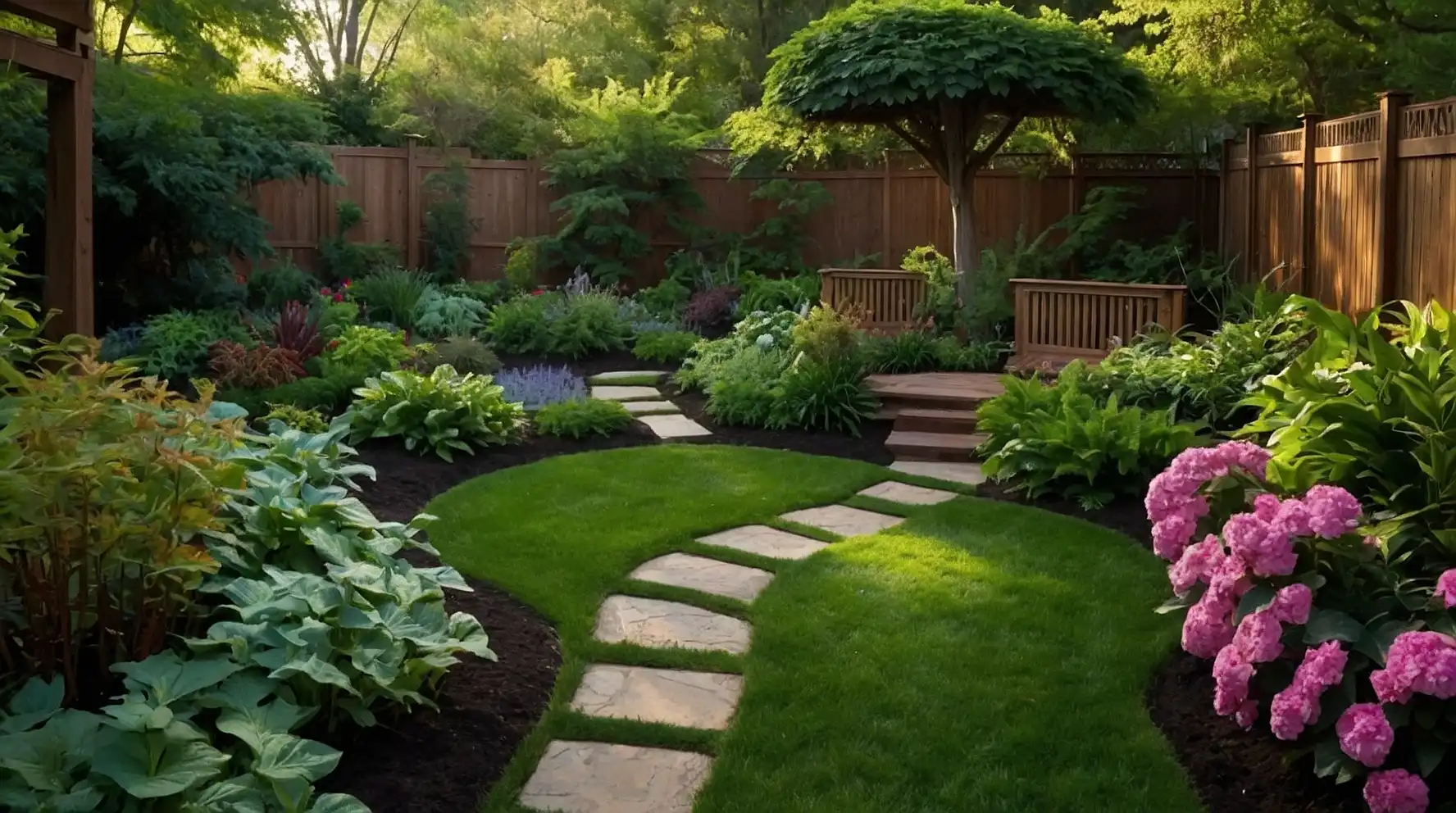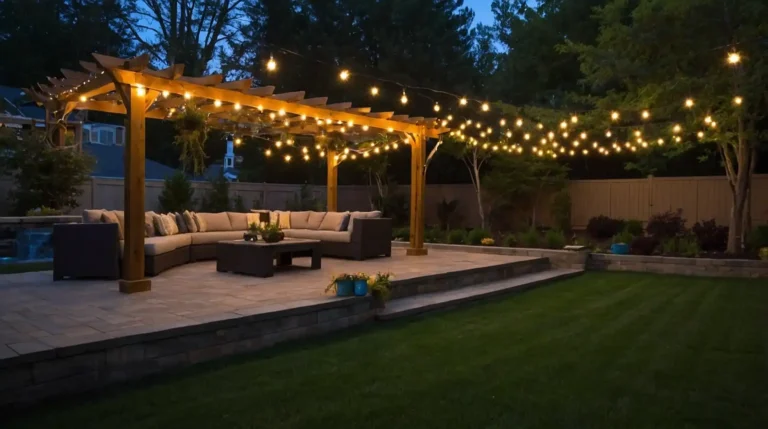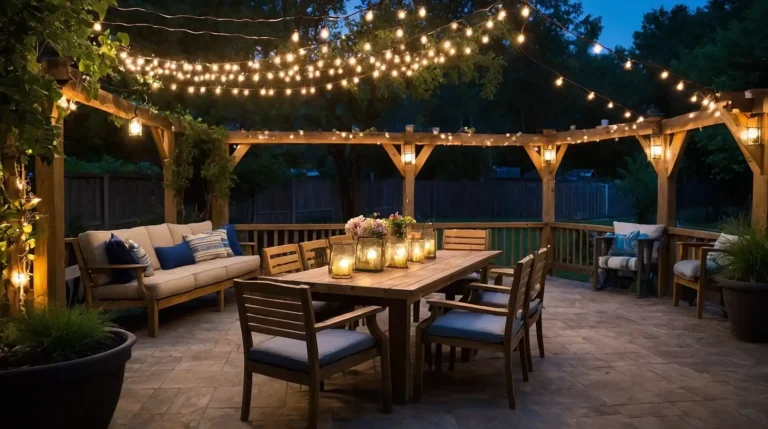17 Enchanting Shade Garden Design Layouts: Transform Your Shady Spots
Do you struggle with shady areas in your garden that seem impossible to beautify?
You’re not alone. Many homeowners view shade as a limitation rather than an opportunity.
Shade gardens offer a cool retreat from summer heat and can showcase stunning foliage textures, delicate blooms, and peaceful arrangements that sunny gardens simply can’t match.
With the right design approach, those dark corners can become the most enchanting spots in your landscape.
Let’s explore 17 creative layout ideas to transform your shady spots into garden highlights.
1: Woodland Pathway Wonder
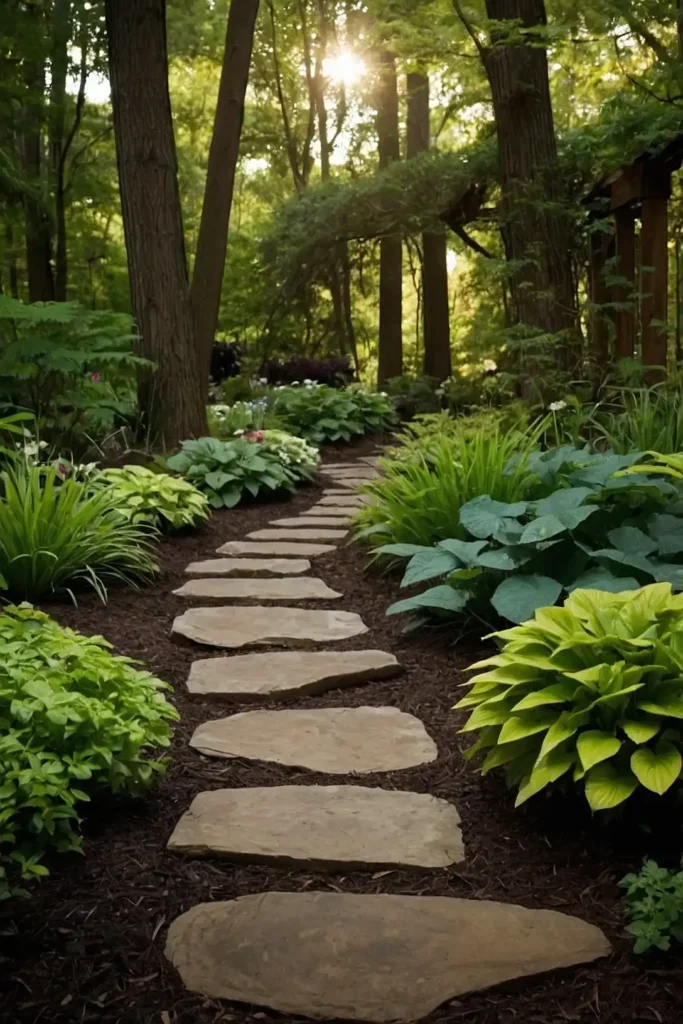
Create a meandering path through your shade garden using natural materials like flagstone or wood chips.
Border it with ferns, hostess, and actable for a woodland feel.
This design mimics a forest floor, inviting you to wander and discover. Add small garden ornaments as surprise elements along the journey for visual interest.
The dappled light filtering through trees above will enhance the magical woodland atmosphere.
2: Tiered Shade Garden Display
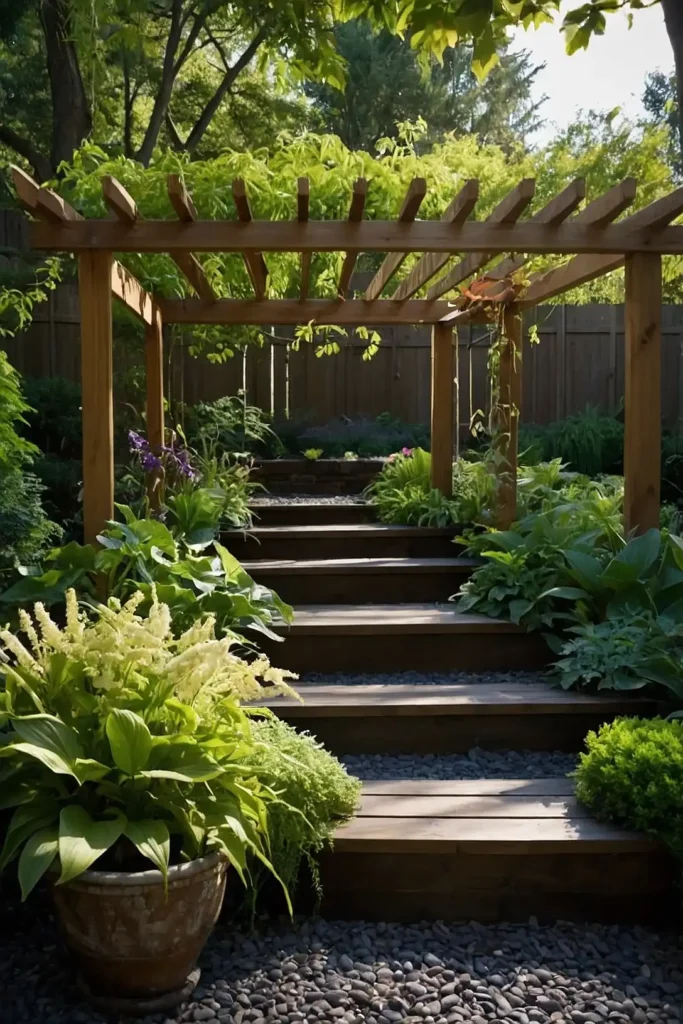
Build multiple levels in your shade garden using retaining walls or terraced beds. This approach adds dimension and creates distinct planting zones.
Place taller plants like Japanese maples or rhododendrons at the back, mid-height plants in the middle, and ground covers in front.
The layered effect maximizes viewing pleasure from any angle.
This design works particularly well on sloped properties, turning a challenging landscape into an asset.
3: Secret Garden Retreat
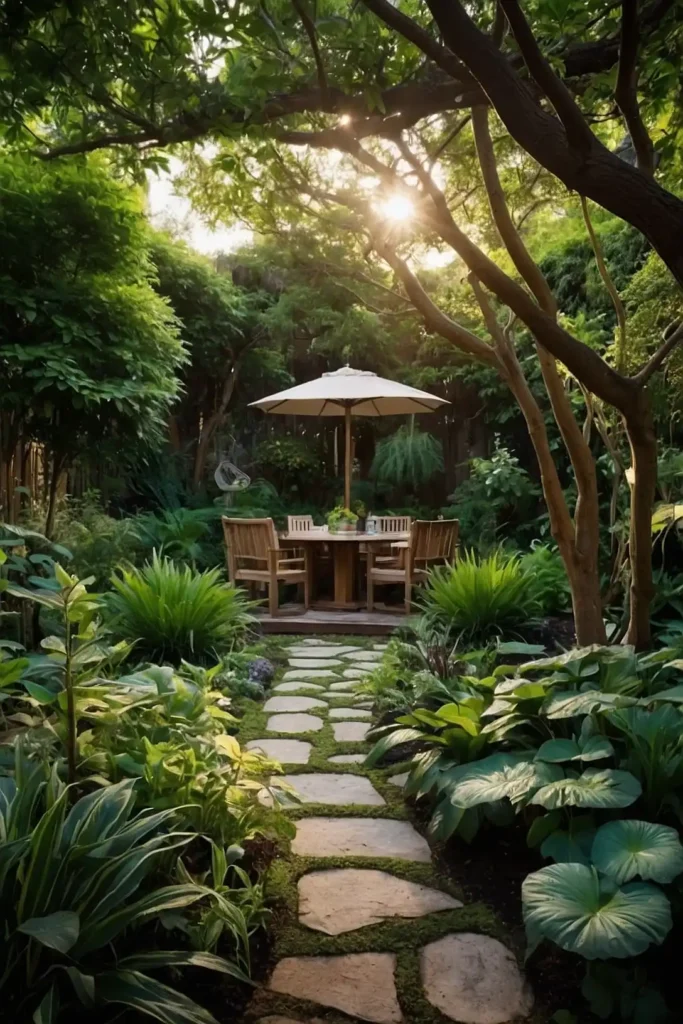
Carve out a hidden seating area surrounded by shade-loving plants. Install a bench or pair of chairs in a secluded nook where you can enjoy your coffee or read.
Frame the space with climbing hydrangeas or shade-tolerant vines on trellises. Add stepping stones leading to your retreat for an element of discovery.
This layout transforms an unused shady corner into your garden’s most coveted spot.
4: Circular Focus Garden
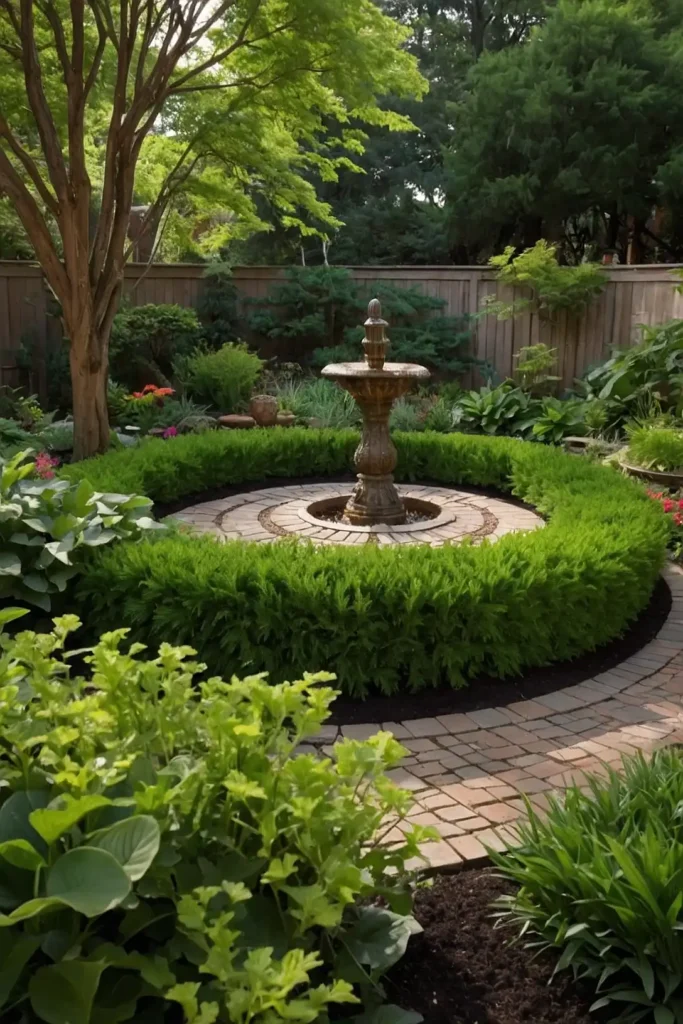
Design a round garden bed with concentric planting circles around a central feature like a birdbath, sculpture, or specimen plant.
This classic design creates natural flow.
Use plants with contrasting foliage textures and colors that radiate outward.
Tiarella, heuchera, and Japanese forest grass make excellent choices for textural variety.
The circular pattern naturally draws the eye inward, creating a meditative focal point in your shade garden.
5: Asian-Inspired Minimalism
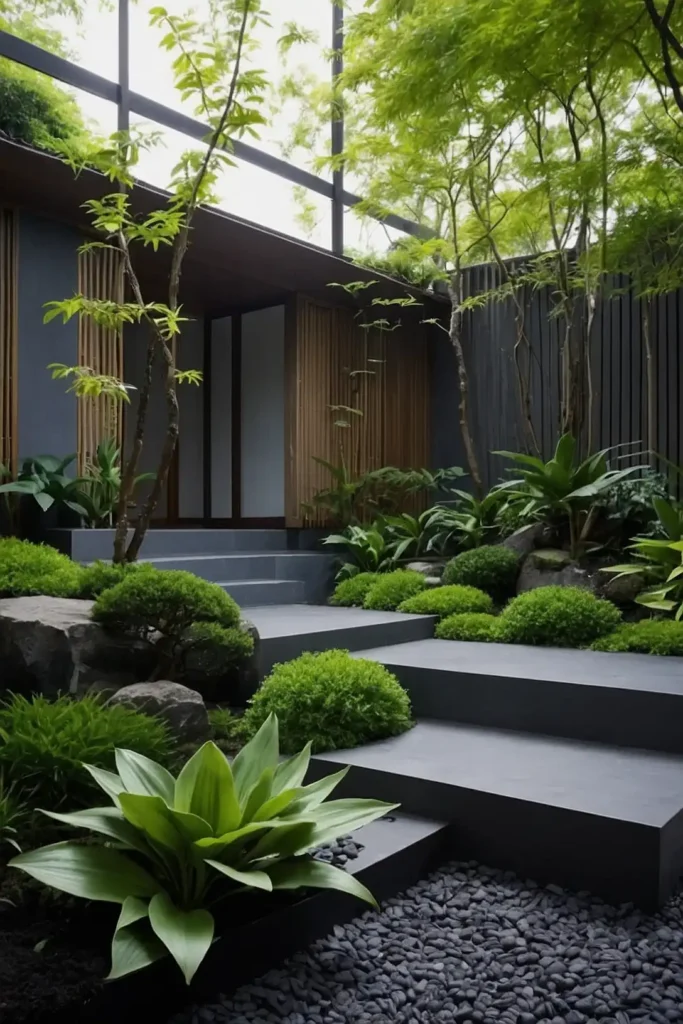
Embrace the less-is-more approach with carefully placed specimen plants, smooth stones, and raked gravel. This Zen-inspired design thrives in shade.
Focus on plants with distinctive forms like Japanese maples, bamboo, and ornamental grasses.
Leave ample negative space to allow each element to stand out.
The simplicity creates a sense of calm that perfectly complements shaded areas.
6: Vertical Shade Garden
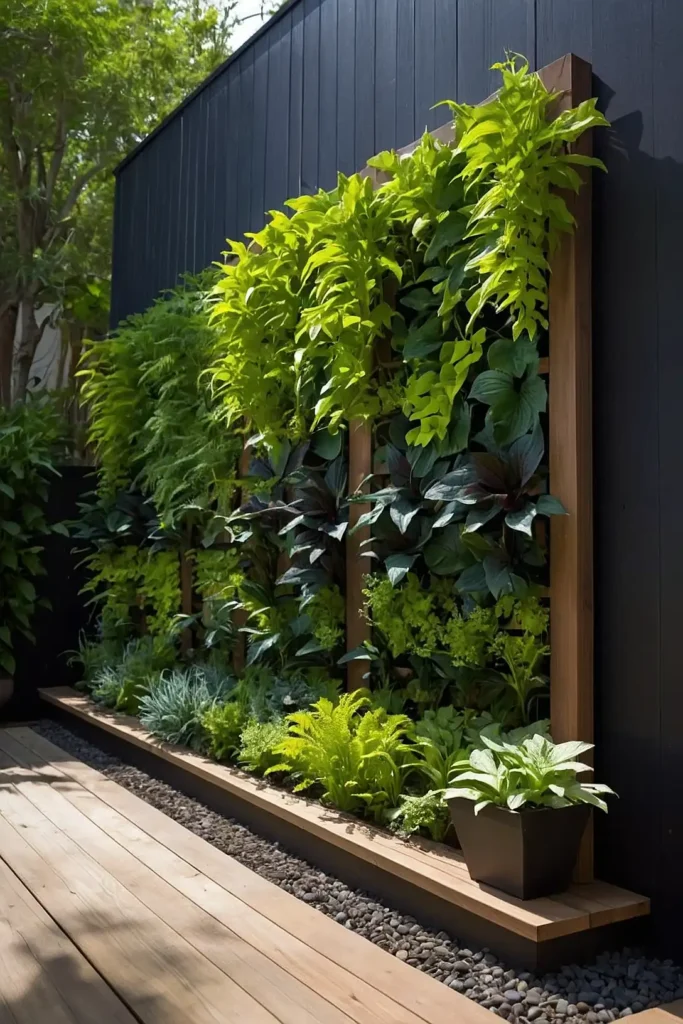
Maximize limited space by growing upward with wall planters, hanging baskets, and climbing plants.
This approach works wonderfully for small, shaded urban gardens.
Install a living wall system with pockets for ferns, begonias, and other shade lovers. Integrate climbing hydrangeas or clematis for additional height.
The vertical orientation makes shaded corners feel lush and abundant even in tiny spaces.
7: Moss Garden Sanctuary
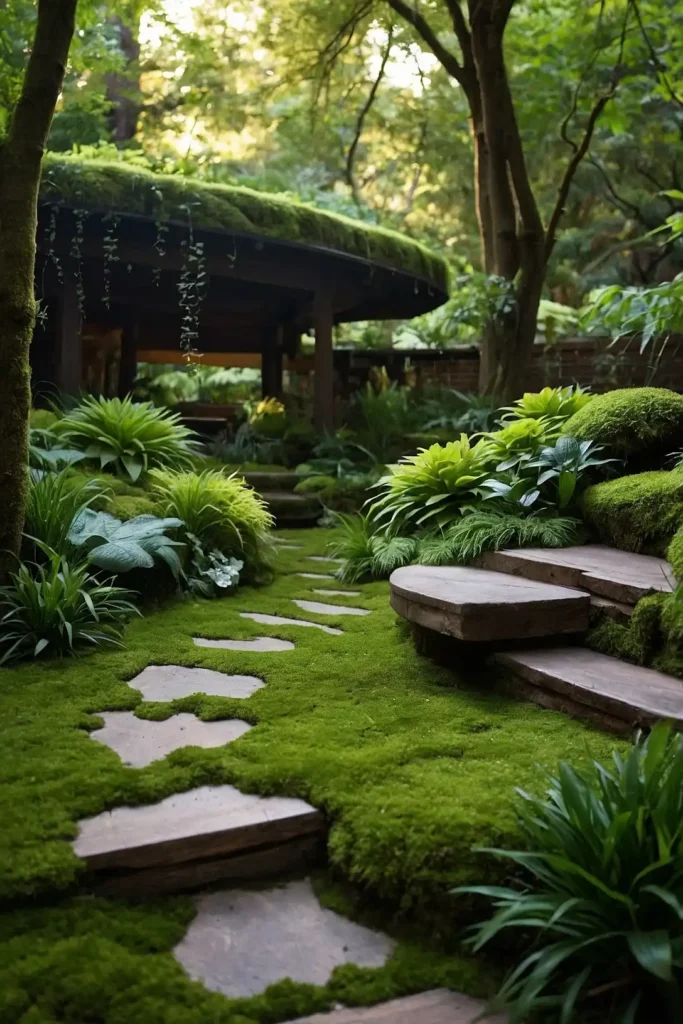
Celebrate the natural beauty of moss by creating a dedicated moss garden. This low-maintenance option thrives in the dampest, shadiest spots.
Incorporate smooth stones, small water features, and select shade perennials for contrast. Different moss varieties offer subtle variations in texture and color.
The velvety carpet creates a serene, ancient atmosphere that feels timeless and peaceful.
8: White Garden for Shade
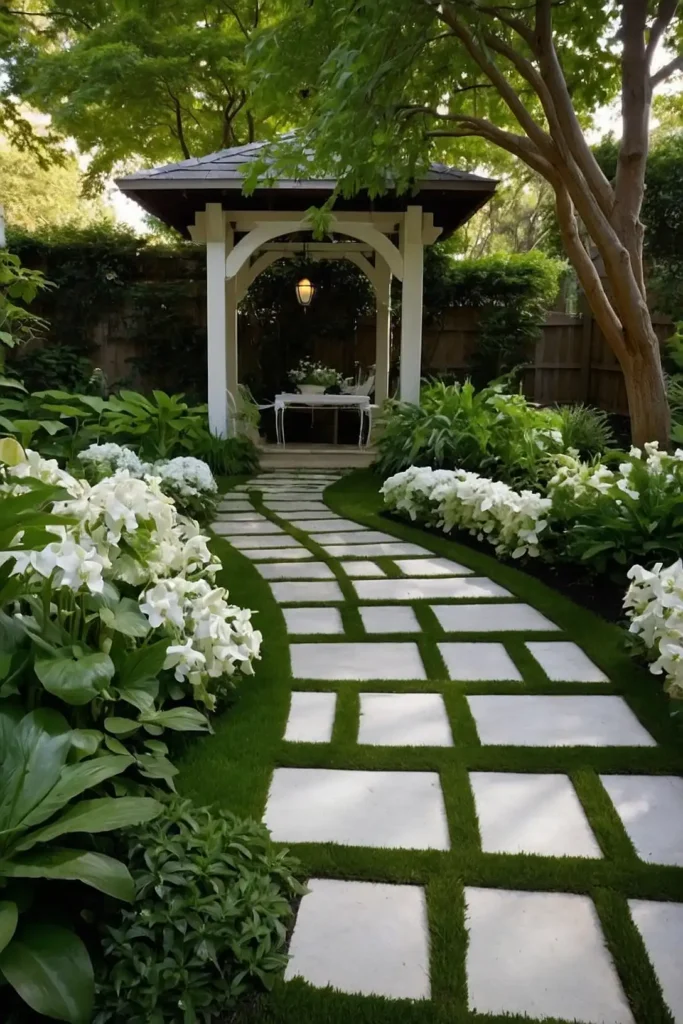
Plant white-flowering and silver-foliaged plants that seem to glow in low light conditions. This monochromatic approach brings brightness to dark corners.
Include white impatiens, actable, bleeding heart, and variegated hostess.
The limited color palette creates a sophisticated, cohesive look that illuminates shady areas.
This design is particularly magical in evening light, extending your garden enjoyment into twilight hours.
9: Fern Gully Immersion
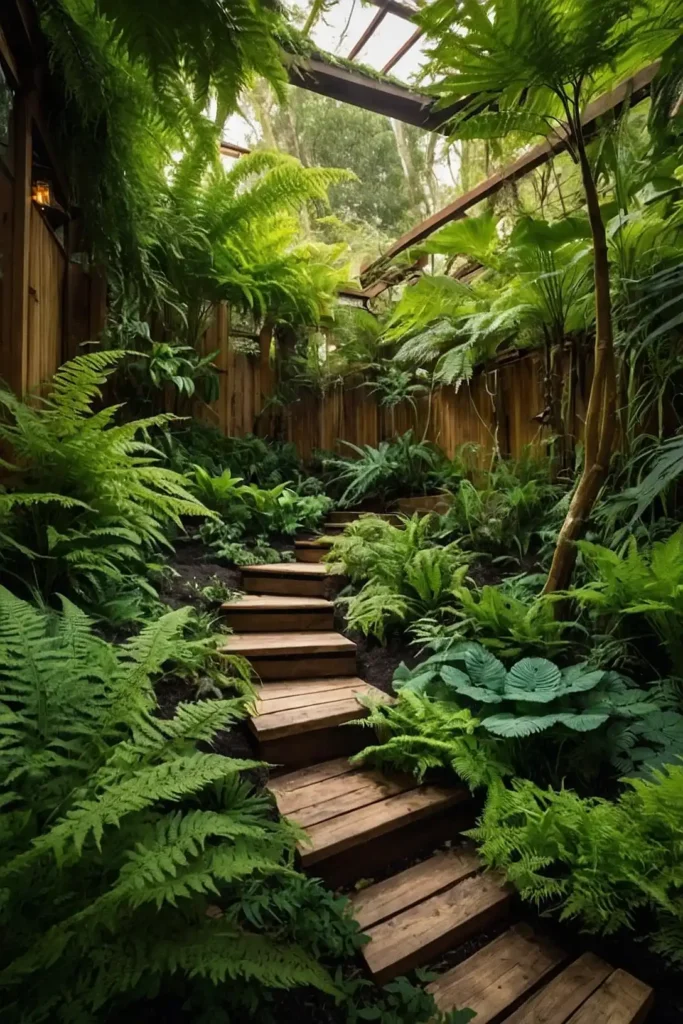
Create a lush display of different fern varieties, showcasing their diverse forms and textures. Few plants perform better in deep shade than ferns.
Mix maidenhair, painted, ostrich, and Japanese painted ferns for variety. Add large stones and fallen logs for a naturalistic forest floor effect.
This primeval design connects your garden to ancient plant heritage, creating a prehistoric vibe.
10: Shade-Loving Edible Garden
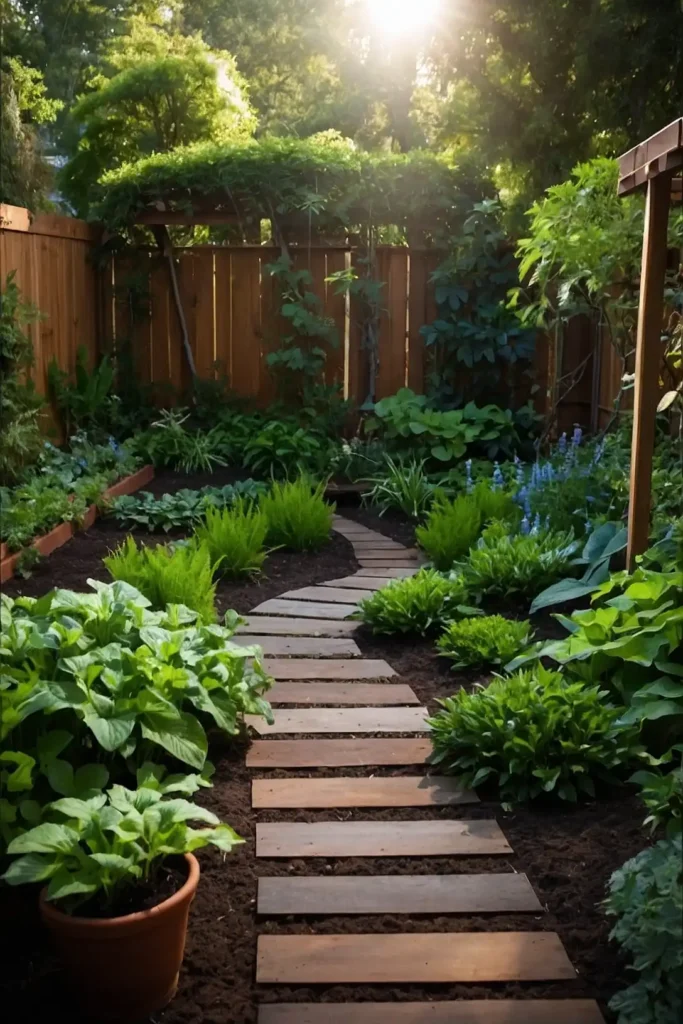
Challenge conventional thinking by growing edibles in your shade garden. Many herbs and some vegetables tolerate partial shade better than you might expect.
Plant mint, chives, parsley, and sorrel in attractive patterns. Lettuces, kale, and spinach can also thrive with 3-4 hours of filtered sunlight.
This productive layout combines beauty with function, transforming your shade garden into a useful space.
11: Tropical Shade Paradise
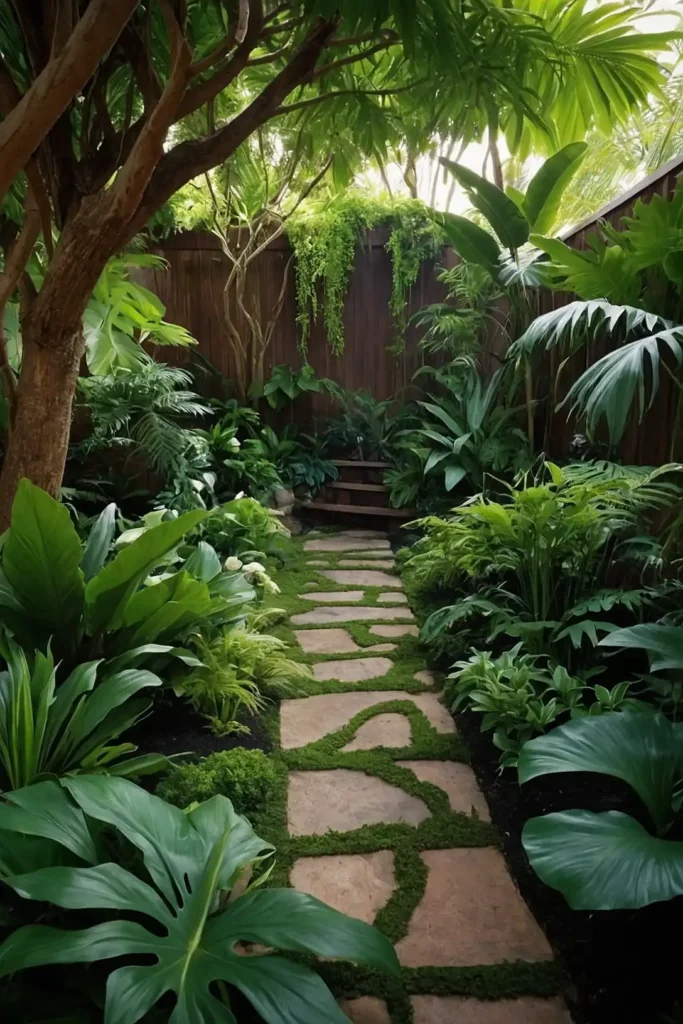
Create a lush, exotic retreat using bold-leaved plants that thrive in humidity and shade. This design brings vacation vibes to your backyard.
Incorporate elephant ears, caladiums, and colorful coleus for dramatic effect. Add moisture-loving flowering plants like begonias for splashes of color.
The large-scale foliage creates an immersive jungle experience even in temperate climates.
12: Hosta Collection Display
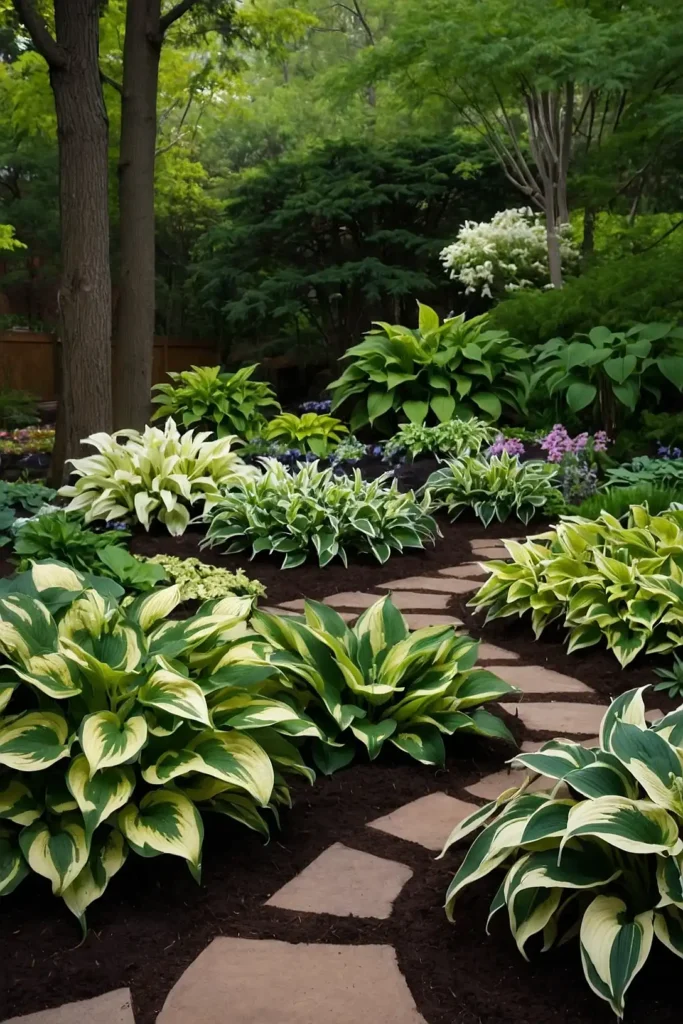
Showcase these shade garden champions by creating a dedicated Hosta garden with diverse varieties. Few plants offer more variety in shade settings.
Arrange them by size, color, or leaf pattern for a collector’s approach.
Mix in companion plants like bleeding hearts and Japanese forest grass for seasonal interest.
This layout celebrates the impressive diversity available within a single plant genus.
13: Rain Garden for Shade
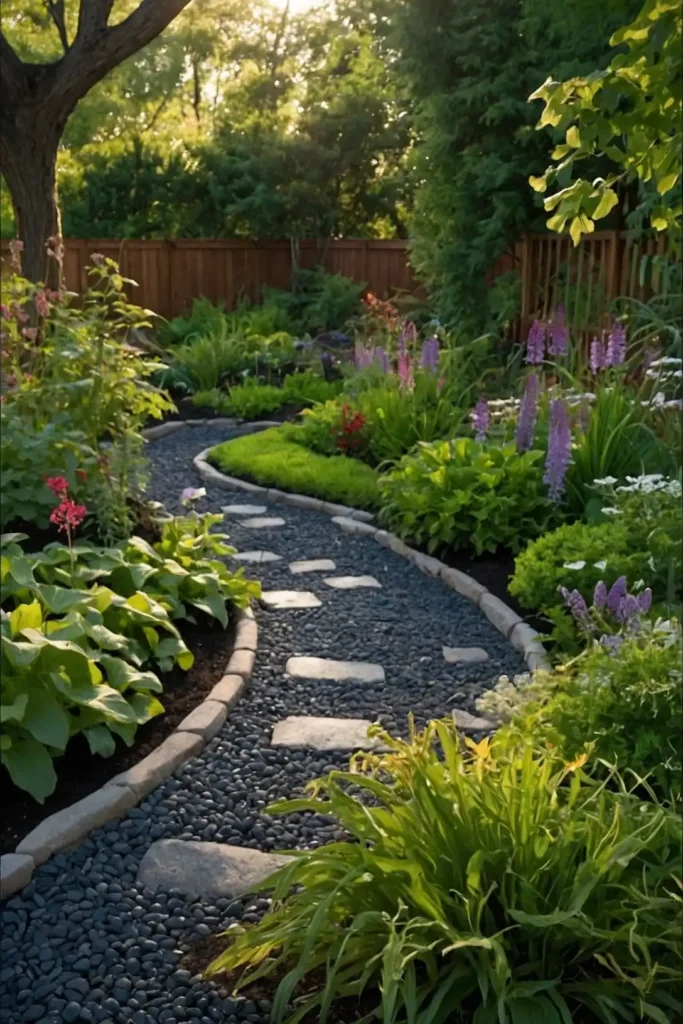
Design a depression that captures rainwater while featuring shade plants that tolerate periodic flooding. This eco-friendly approach solves drainage issues.
Select moisture-loving natives like cardinal flower, turtlehead, and Virginia bluebells. Incorporate ornamental sedges and rushes for textural diversity.
This sustainable design manages storm water while creating a unique garden ecosystem.
14: Woodland Edge Transition
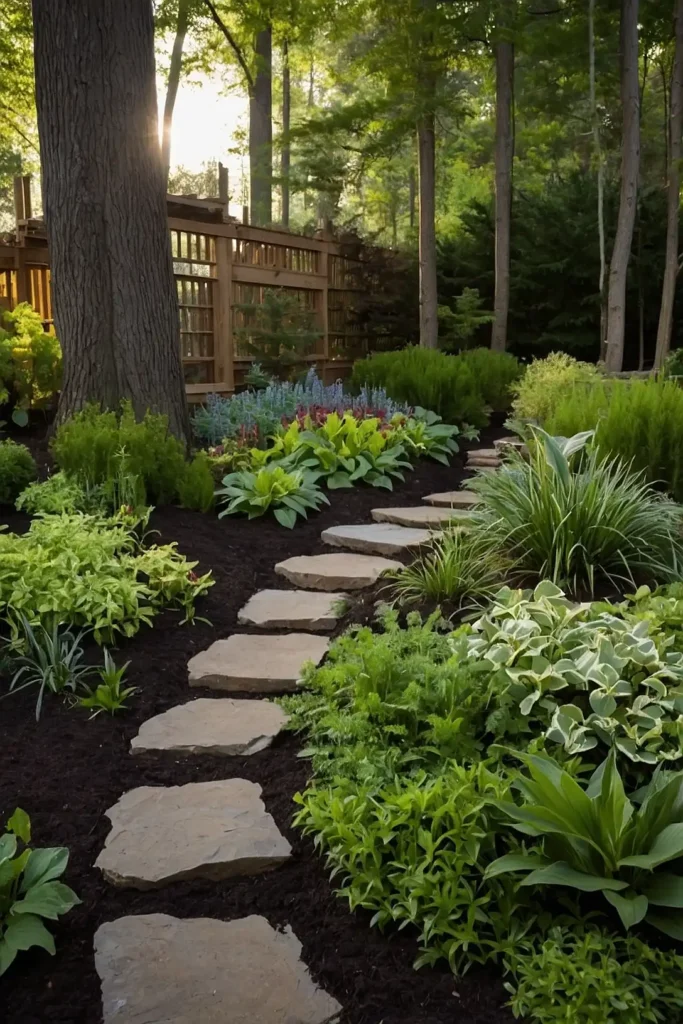
Create a graduated planting scheme that mimics the natural transition from forest to clearing. This design works well at property boundaries.
Place trees and tall shrubs at the back, then medium-sized shade lovers, followed by woodland edge plants that tolerate some sun.
The layered effect creates depth and ecological harmony.
This naturalistic approach attracts beneficial wildlife while softening landscape transitions.
15: Shade Cottage Garden

Adapt the beloved cottage garden style to shaded conditions using appropriate plant substitutions. The informal, abundant style works beautifully in dappled light.
Mix foxgloves, columbines, hellebores, and bleeding hearts for flower power. Add hostess and ferns for reliable foliage structure between blooms.
The romantic, slightly untamed aesthetic brings charm to areas where traditional cottage garden plants won’t thrive.
16: Sculpture and Shadow Garden
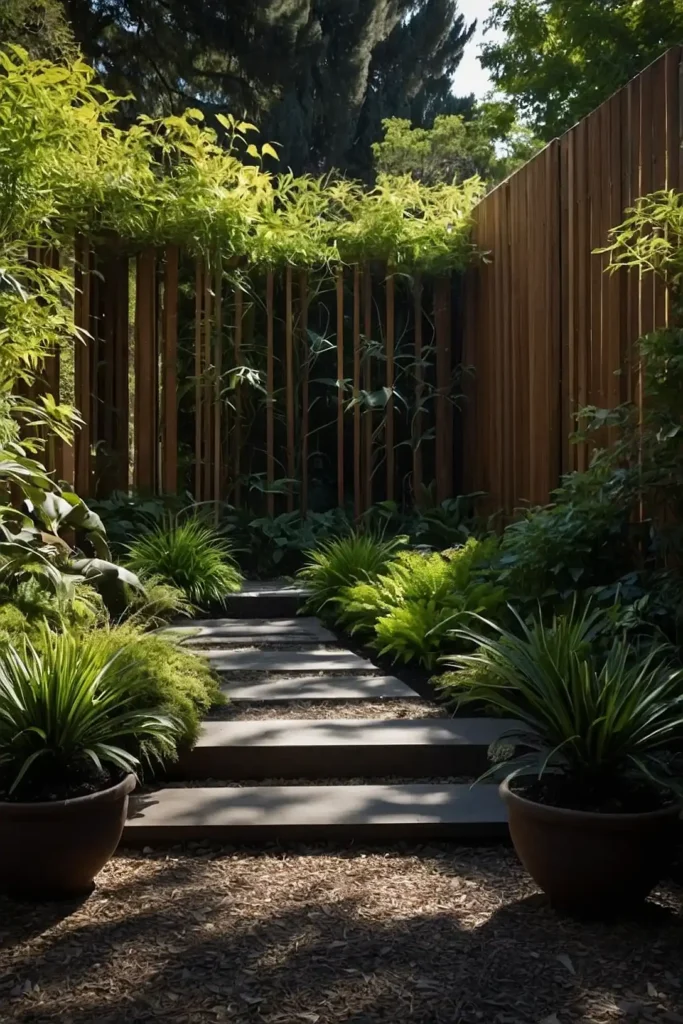
Design around artistic elements that play with limited light and shadow patterns. This approach combines horticulture with artistic expression.
Choose plants with interesting silhouettes like Japanese maples or ornamental grasses.
Position sculptures where dappled light creates changing shadow patterns throughout the day.
This artistic layout elevates your shade garden from pretty to profound, engaging visitors on multiple levels.
17: Miniature Shade Landscape
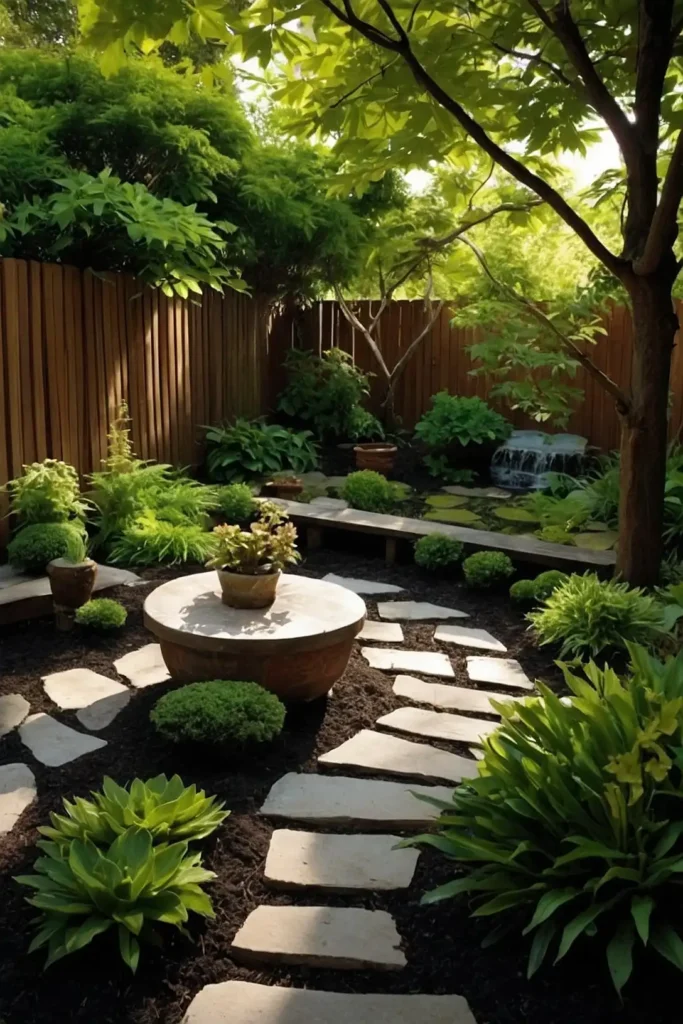
Create a scaled-down landscape that tells a story within a small shaded area. This approach works well for intimate spaces like side yards.
Use dwarf conifers, small-leaved hostess, and tiny-flowered shade perennials. Add miniature garden elements like fairy houses or tiny benches for whimsy.
This playful design invites closer inspection and brings joy to overlooked garden corners.
Conclusion
Your shady spots hold tremendous potential for garden magic.
Start small with one of these designs, and watch as your challenging areas transform into your landscape’s most captivating features. Embrace the shade!

